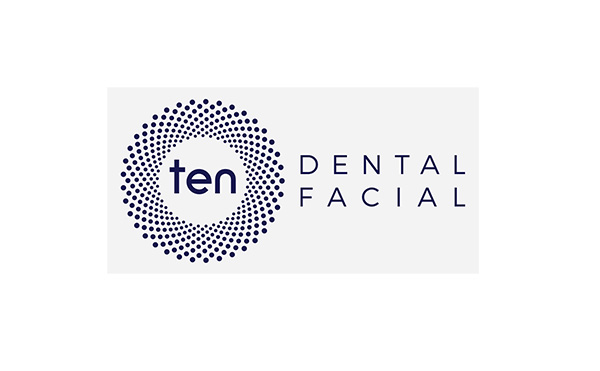Cardiovascular disease and periodontitis – Dr Federico Tinti Specialist Periodontist Ten Dental
Featured Products Promotional FeaturesPosted by: Dental Design 5th December 2019

 Almost a third of all deaths worldwide are attributed to cardiovascular disease (CVD).[i] Periodontal diseases are also highly prevalent, affecting between 20-50% of the global population. An increasing body of literature links the two conditions, with a meta-analysis of studies finding that periodontal disease increases the risk of CVD by 19%, which rises to 44% among those aged over 65.[ii] P. gingivalis is associated with CVD risk, but whether this relationship is bidirectional has yet to be conclusively determined.[iii]
Almost a third of all deaths worldwide are attributed to cardiovascular disease (CVD).[i] Periodontal diseases are also highly prevalent, affecting between 20-50% of the global population. An increasing body of literature links the two conditions, with a meta-analysis of studies finding that periodontal disease increases the risk of CVD by 19%, which rises to 44% among those aged over 65.[ii] P. gingivalis is associated with CVD risk, but whether this relationship is bidirectional has yet to be conclusively determined.[iii]
Periodontal disease is an independent risk factor for atherosclerosis, which refers to a condition where plaque forms in and on the walls of arteries.[iv] This has the effect of hardening and narrowing the arteries, restricting blood flow and inhibiting the supply of oxygen to organs. Atherosclerosis is usually asymptomatic in its early stages but as it worsens, it may result in angina, peripheral arterial disease, and is the most common cause of potentially fatal heart attacks and strokes.[v], [vi] In addition to a potential overlap in disease pathogenesis, common genetic factors in patients have been identified.vii
Periodontal disease may increase the likelihood of venous thromboembolism (VTE) – otherwise known as a clot – which is a potential complication of atherosclerosis. Self-reported tooth loss due to periodontal disease has been associated with a 30% increase in VTE. However, a study found those with clinically diagnosed periodontitis were not significantly more likely to undergo a VTE event.[vii] We should note that in the former, self-reported group, periodontitis has progressed to a point where tooth loss occurred, whereas in the latter group it can be diagnosed far earlier in its progression. From this, we might surmise that the stage and severity of periodontitis are relevant to its significance as a risk factor for VTE. This would align with other findings that show a correlation between the severity of periodontitis and a greater incidence of atherosclerotic CVDs.iv, [viii]
The nature of the relationship between periodontitis and CVD is still an area of debate. There are numerous suggested pathways and parallels that may be responsible for the increased risk, but we do not yet have definitive answers. The confluence of CVD, periodontitis and other systemic health factors and risks makes isolating the answers difficult. Diabetes, smoking, atrial fibrillation, high blood pressure and high cholesterol are among the major risk factors for CVD.[ix] Studies have found each of these factors to also be associated with periodontitis.[x], [xi], [xii], [xiii], [xiv] Although we may not fully understand these interactions, it does appear that successfully treating periodontitis corresponds to a reduction in CVD risk (particularly in those with diabetes).[xv] Patients who do not respond well to periodontal treatment have been observed to be at greater risk of CVD.[xvi]
Treating patients with complex health factors such as CVD requires additional consideration. Due to the significant overlapping of risk factors, the presence of CVD may indicate other complications such as hypertension. This often goes undiagnosed, so a patient will not necessarily be aware they have it. Patients that have been diagnosed with hypertension may be on medication for the condition and its related effects. These medications can cause oral complications, including dry mouth, gingival enlargement and lichenoid reactions.
As with other medications, great care must be taken to avoid interactions and side effects where possible. Epinephrine is sometimes employed in dentistry, which could present a risk in patients with hypertension. The use of this medication increases the chances of hypertensive or hypotensive episodes, angina pectoris, arrhythmias and myocardial infarction. It may also interact with drugs prescribed for hypertension, so caution must be taken when administering local anaesthesia.[xvii] Likewise, other metabolic conditions present a number of potential complications, requiring knowledge and care on the clinician’s part to safely treat such patients.
Where periodontitis has resulted in tooth loss, patients may seek dental implants. There are only a few absolute contraindications to implant treatment, but all due care must be taken with patients who suffer from compromised health conditions like CVD. Although implant survival rates for patients with CVD are similar to those of the general population, maintaining control over the condition is critical.[xviii]
The health status of patients with periodontitis can be more complex than those without. These patients can present a complicated web of interrelated conditions and may be receiving a variety of drugs. For complex or demanding cases, you may wish to refer to the multi award-winning team at Ten Dental+Facial. They have the knowledge, skills and outstanding modern facilities to deliver the highest quality treatment and put patients at ease.
Good prevention and management of periodontal disease can reduce the risk of CVD and could actually save patients from a stroke or other life-threatening conditions. However, the same complications that are intertwined with periodontitis can present specific risks to patients during treatment. Having a complete picture of the patient’s health status, and a comprehensive understanding of the potential problems related to CVD and periodontitis, is critical to providing safe treatment.
For more information visit www.tendental.com or call on 020 33932623
References
[i] World Health Organization. Cardiovascular disease. WHO. 2019. https://www.who.int/cardiovascular_diseases/en/ June 27, 2019.
[ii] Nazir M. Prevalence of periodontal disease, its association with systemic diseases and prevention. International Journal of Health Sciences. 2017; 11(2): 72-80. https://www.ncbi.nlm.nih.gov/pmc/articles/PMC5426403/ June 27, 2019.
[iii] Card J., Carey M., Voltz J., Bradbury J., Ferguson C., Cohen E., Schwartz S., Flake G., Morgan D., Arbes S. Jr., Barrow D., Barros S., Offenbacher S., Zeldin D. Modulation of allergic airway inflammation by the oral pathogen Porphyromonas gingivalis. Infection and Immunity. 2010; 78(6): 2488-2496. https://www.ncbi.nlm.nih.gov/pmc/articles/PMC2876545/ June 27, 2019.
[iv] Beukers N., van der Heijden G., van Wijk A., Loos B. Periodontitis is an independent risk indicator for atherosclerotic cardiovascular diseases among 60174 participants in a large dental school in the Netherlands. Journal of Epidemiology & Community Health. 2017; 71: 37-42. https://jech.bmj.com/content/71/1/37.full June 27, 2019.
[v] NHS. Atherosclerosis. NHS. 2019. https://www.nhs.uk/conditions/atherosclerosis/ June 27, 2019.
[vi] Ketabi M., Meybodi F., Asgari M. The association between periodontal disease parameter and severity of atherosclerosis. Dental Research Journal. 2016; 13(3): 250-255. https://www.ncbi.nlm.nih.gov/pmc/articles/PMC4878210/ June 27, 2019.
[vii] Cowan L., Lakshminarayan K., Lutsey P., Folsom A., Beck J., Offenbacher S., Pankow J. Periodontal disease and incident venous thromboembolism: the atherosclerosis risk in communities study. Journal of Clinical Periodontology. 2018; 46(1): 12-19. https://onlinelibrary.wiley.com/doi/full/10.1111/jcpe.13029 June 27, 2019.
[viii] Ketabi M., Meybodi F., Asgari M. The association between periodontal disease parameter and severity of atherosclerosis. Dental Research Journal. 2016; 13(3): 250-255. https://www.ncbi.nlm.nih.gov/pmc/articles/PMC4878210/ June 27, 2019.
[ix] NHS. Cardiovascular disease (CVD). NHS. 2019. https://www.england.nhs.uk/ourwork/clinical-policy/cvd/ June 27, 2019.
[x] Sanz M., Ceriello A., Buysschaert M., Chapple I., Demmer R., Graziani F., Herrera D., Jepsen S., Lione L., Madianos P., Mathur M., Montanya E., Shapira L., Tonetti M., Vegh D. Scientific evidence on the links between periodontal diseases and diabetes: consensus report and guidelines of the joint workshop on periodontal diseases and diabetes by the International Diabetes Federation and the European Federation of Periodontology. Journal of Clinical Periodontology. 2017; 45(2): 138-149. https://doi.org/10.1111/jcpe.12808 June 27, 2019.
[xi] Shah A., Batra M., Baba I., Salma S., Yousuf A. Periodontal disease and smoking: an overview. Clinical Cancer Investigation Journal. 2016; 5(2): 99-102. http://www.ccij-online.org/text.asp?2016/5/2/99/177132 June 27, 2019.
[xii] Chen D., Lin C., Chen Y. Chen H. Risk of atrial fibrillation or flutter associated with periodontitis: a nationwide, population-based, cohort study. PLoS ONE. 2016; 11(10): e01655601. https://www.ncbi.nlm.nih.gov/pmc/articles/PMC5087888 June 27, 2019.
[xiii] Paizan M., Vilela-Martin J. Is there an association between periodontitis and hypertension? Current Cardiology Reviews. 2014; 10(4): 355-361. https://www.ncbi.nlm.nih.gov/pmc/articles/PMC4101200/ June 27, 2019.
[xiv] Hagh L., Zakavi F., Hajizadeh F., Saleki M. The association between hyperlipidema and periodontal infection. Iran Red Crescent Medical Journal. 2014; 16(12): e6577. https://www.ncbi.nlm.nih.gov/pmc/articles/PMC4341345/ June 27, 2019.
[xv] Peng C., Yang Y. Chan K., Kornelius E., Chiou J., Huang C. Periodontal treatment and the risks of cardiovascular disease in patients with type 2 diabetes: a retrospective cohort study. Internal Medicine. 2017; 56(9): 1015-1021. https://www.ncbi.nlm.nih.gov/pmc/articles/PMC5478560/ June 27, 2019.
[xvi] Holmlund A., Lampa E., Lind L. Poor response to periodontal treatment may predict future cardiovascular disease. Journal of Dental Research. 2017; 96(7): 768-773. https://doi.org/10.1177/0022034517701901 June 27, 2019.
[xvii] Southerland J., Gill D., Gangula P., Halpern L., Cardona C., Mouton C. Dental management in patients with hypertension: challenges and solutions. Clinical, Cosmetic and Investigational Dentistry. 2016; 8: 111-120. https://www.ncbi.nlm.nih.gov/pmc/articles/PMC5074706/
[xviii] Vissink A., Spikervet F., Raghoebar G. The medically compromised patient: are dental implants a feasible option? Oral Diseases. 2018; 24(1-2). https://onlinelibrary.wiley.com/doi/full/10.1111/odi.12762 June 27, 2019.









